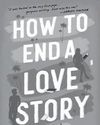Prøve GULL - Gratis
"See" Your Story Take Shape With Visual Note-taking
Writer’s Digest
|May/June 2025
Creating a sketchnote can provide valuable insights as you brainstorm or organize your story.

Ahh, research. Love it or hate it, a story can't be built without it.
Many writers struggle with forging an article out of piles of background research, interview notes, and attempted outlines. We all know it's better to have a mountain of research than next to nothing, but extracting the value can feel as challenging as mining for precious metals.
In the last year, I've found a reliable tool for shaping research into nonfiction stories. I believe it can work for all kinds of writing—nonfiction, fiction, poetry, even commercial copywriting, or technical communication. The practice of visual note-taking—also known as sketchnoting—has improved my ability to see patterns in my research and helped me define the structure for these stories, leading to the creation of better-written articles with less stress.
One of the pioneers of visual note-taking is Mike Rohde, author of The Sketchnote Handbook and The Sketchnote Workbook. Like many writers, Rohde, whose primary occupation is user experience designer, struggled with taking notes at events and trying to make use of them later. He reached a breaking point in 2007 facing a design conference in Chicago.
 Shaking up his normal approach to note-taking, Rohde brought a small Moleskine notebook and a pen to the conference and gave up on the stenographic approach to capturing everything. He created titles and headings with hand-lettered type, and he added small hand-drawn pictures to his notes. The results amazed not only him but his audience on Flickr.
Shaking up his normal approach to note-taking, Rohde brought a small Moleskine notebook and a pen to the conference and gave up on the stenographic approach to capturing everything. He created titles and headings with hand-lettered type, and he added small hand-drawn pictures to his notes. The results amazed not only him but his audience on Flickr.“I was getting comments from people who were not at the event who said, “This is really helpful,” Rohde said. “They would comment, ‘I got value from the notes you took because they were very concise and to the point’ ... That’s when I stopped and said, wait a minute. There's something interesting happening here.”
Denne historien er fra May/June 2025-utgaven av Writer’s Digest.
Abonner på Magzter GOLD for å få tilgang til tusenvis av kuraterte premiumhistorier og over 9000 magasiner og aviser.
Allerede abonnent? Logg på
FLERE HISTORIER FRA Writer’s Digest
Writer’s Digest
100 Best Markets for Writers
A list of print and online publications looking for freelancers to contribute their knowledge on everything from pet care to finance and beyond.
65 mins
Yearbook 2026

Writer’s Digest
Memoir Plus
Add a bonus to your personal narrative for a marketing boost.
8 mins
Yearbook 2026
Writer’s Digest
Surefire Ways to Sell Your Children's Book
In my 28 years editing children's books, I've learned that publishing exists at the intersection of art and commerce.
5 mins
Yearbook 2026
Writer’s Digest
The ABCs of Freelance Success
Many freelance writers, especially those at the beginning of their careers, tend to place almost all of their professional focus on one specific component: craft.
5 mins
Yearbook 2026

Writer’s Digest
How to Write in Different Genres
Emiko Jean and Yulin Kuang share tips and strategies for how they successfully write in different genres and mediums.
8 mins
Yearbook 2026
Writer’s Digest
Small But Mighty
Why small presses might be the perfect home for your book.
8 mins
Yearbook 2026

Writer’s Digest
The Story Behind the Story
What's backstory, and what's it doing here anyway?
6 mins
Yearbook 2026

Writer’s Digest
2025 Year in Review
Publishing expert Jane Friedman recaps the biggest news in the industry.
8 mins
Yearbook 2026

Writer’s Digest
What Is Your Story Question?
When a story isn't working—when you know it's not quite coming together, when beta readers and critique partners confirm your fears but can't put a finger on why, or you're not getting offers from agents or publishers—savvy authors start trying to diagnose the issue by examining its component parts, like characterization, plot, and stakes.
6 mins
Yearbook 2026
Writer’s Digest
Writer's Digest 27th Annual 101 Best Websites for Writers
For the 27th year, Writer's Digest is shining a light on 101 websites with a goal of helping writers in a variety of ways.
26 mins
Yearbook 2026
Listen
Translate
Change font size
